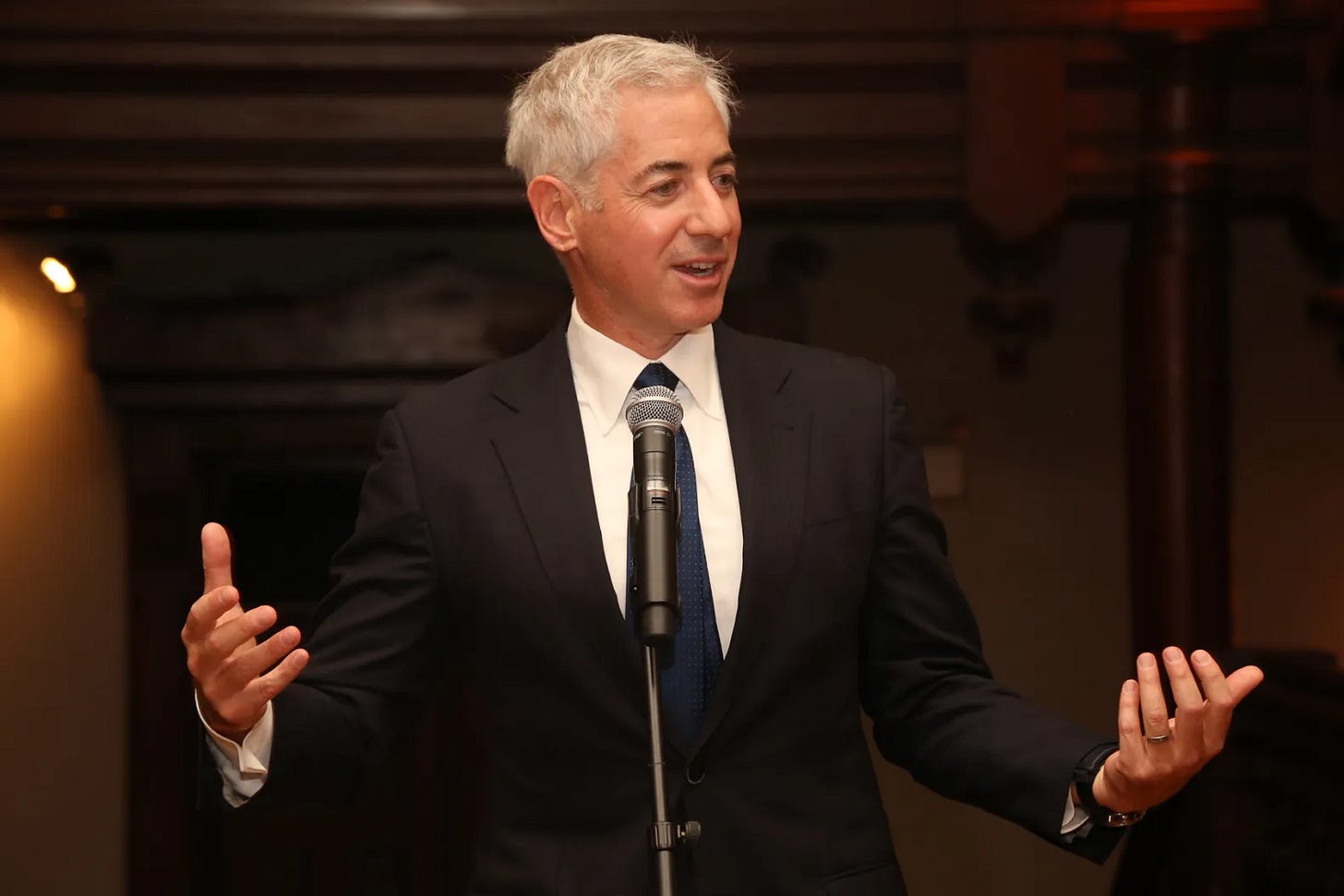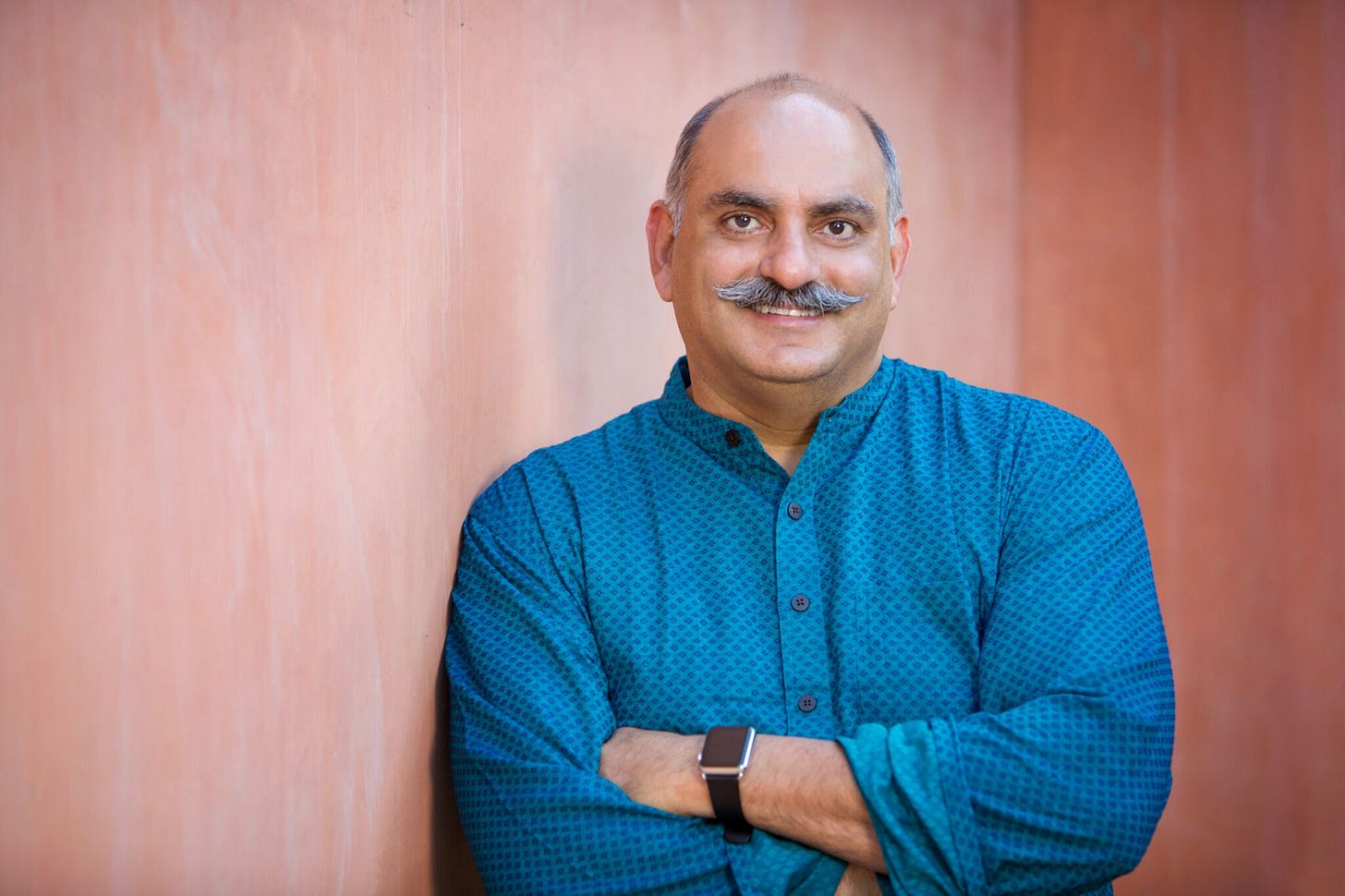🛑Nothing on this page constitutes any form of advice, investments may go up or down. The author does not accept any liability for any loss incurred. The author also does not take any liability for actions influenced or undertaken as a result of this page.🛑
I wanted to write a short piece discussing the strategies of some great investors, and what we can learn from their approaches. Whilst there are many great investors out there I picked four that I find interesting. Investing successfully is a challenge, so having great investors to learn from is essential. No one has a crystal ball, and all investors have at some point made a mistake, but mitigating the probability of these through successful strategies is necessary.
Bill Ackman
Starting with Bill Ackman, who originally founded Gotham Partners, with David Berkowitz in 1992, grew their funds successfully, but eventually dissolved the business in 2003 due to legal issues. Since then he has started Pershing Square Capital Management in 2004. Pershing Square now has around $15 Billion in assets under management.
Given his outspoken and public nature, Bill has had a lot of controversy over the years, and his investments are closely followed by the media. You may know of some notable cases, like Herbalife in which he shorted. Carl Ichan, another prominent investor, invested in the fund leading to a large loss for Ackman. But one of the key areas of his strategy is acknowledging errors and learning from mistakes. In an industry that is affected deeply by individual mistakes, it is important to learn from and recognise these for the sake of investors and for yourself.
https://www.rollingstone.com/culture/culture-news/bill-ackman-wife-guy-harvard-claudine-gay-1234943020/
A hallmark of Ackmans strategy is activist investing. Which is where an investor seeks to change the company with their rights as a partial owner. Although Bill Ackman has been critisised for his activism (people often think that activists change the direction of the company for the short term to raise the share price and then sell) he utilised it well with Canadian Pacific Railway in 2011, in which he profited about $2.6 Billion. Although many retail investors don’t have the ownership percentage to effect changes, they are still able to vote on the direction of the company, a concept Benjamin Graham discusses the importance of in The Intelligent Investor.
Some other hallmarks of Bill Ackman’s strategy include holding stocks for a long period of time, thus mitigating the short-term, often irrational swings of the market. On top of this, he aims for a highly concentrated portfolio, 8-12 positions. I recall listening to a podcast with Ackman in it where he said he buys in industries that will always be needed/used, such as hospitality.
Although not a commonly held tenet of Ackman’s strategy; in a podcast with Lex Friedman, Ackman stated how he learnt about distressed investing from reading a book, then making an investment on a company. The attitude of believing you can learn anything by applying yourself remains inspirational to me as I continue on my investment journey.
Mohnish Pabrai
Mohnish Pabrai is the founder of Pabrai Investment Funds. He was not always an investor and did a degree in computer engineering and only started investing after selling his own company. He is also renowned for creating Dakshana, a charity that helps rural Indian students pass the entrance exam for the Indian Institute of Technology.
Pabrai’s strategy is famous primarily for his ability to imitate other investors. Pabrai’s investment idol was Warren Buffet, at one point even paying $650,000 along with Guy Spier to have lunch with him; now he knows Buffet personally. Pabrai could see past a market that was caught up by short-term growth and not about value investing. Pabrai took Buffet's approach of buying companies that traded below their intrinsic value, then holding them for long periods. The ability to be able to take positives from other people's journeys and experiences is key to progressing. Why make the same mistake someone else has done if you can learn from them? Pabrai utilised this so well that as stated he now knows Buffet and the late Charlie Munger personally due to his investment success and charitable ways.
I don’t think defining Pabrais investment strategy by the use of cloning gives him enough credit. To be able to achieve returns of 1204% as opposed to the S&P achieving 159% between 2000-2018. He has some key ideas that although are common, he used them well. For example, Pabrai looks for Management that is frugal and critical of their resource allocation thus leading to less business expenditure. Moreover, he uses the idea of Margin of Safety common in value investors like Ackman; that is buying companies that trade below their intrinsic value, thus protecting against downturns.
https://www.wagonsfund.com/people/mohnish-pabrai
Pabrai also focuses on emerging markets and India, which arguably are less viewed and invested in than American equities. By this logic, there would therefore be more opportunity to find undervalued stocks. I think the key takeaway from Pabrai’s strategy however is his desire to now get rich, but to win the game of investing. Many people are too focussed on the short term game, but individuals who focus on a more value-oriented approach buy and hold and patiently, and wait for the stock to reach a good price. Alongside this, a highly concentrated portfolio is desired by Pabrai and by many value investors. If they know 10 stocks well, does a concentrated better researched portfolio carry more risk than one with 30 stocks?
Qais Zakaria and Nick Sleep
Qais Zakaria and Nick Sleep are some of the lesser known pairs in investing as they never looked for large publicity or attended many interviews. It is an interesting story that Zakaria never wanted to work on Wall Street, and hated the industry's demand for producing quick money. They both started Nomad in 2001 and with the name set out to be different from the rest.
A hallmark of their strategy is just creating good returns for their shareholders, and no more. They were not scared to turn away investment if it hindered their performance, and created a very moral pricing structure built for the clients. Those who were lucky enough to invest in Nomad Partners enjoyed a 921% increase from 2001-2014.
Interestingly, they disassociated themselves from the investment world, ignoring the news and focusing solely on companies and their futures. Sleep and Zakaria utilised Scale Economies Shared, which is a cycle that increases the market share of a company. For example, a company may offer low prices to build its market share. A good example is Costco which was driven to maintain low operating costs keeping their products cheap, increasing sales and market share allowing them to keep cheaper products removing the opportunity for competition. Reading their letters to their partners below shows valuable insight into investment wisdom.
They used this model when investing in both Amazon and Costco, both achieving great returns for the pair. Alongside Pabrai and Ackman they valued a long-term approach to their purchases. In line with the concentrated portfolio theory, as William Green documents George Soros shorted Amazon in 2008 and everyone was betting against Amazon, but Sleep and Zakaria stood firm and ultimately benefited from the investment, an interesting case of being sure about yourself, and your research.
What is there to learn?
The three groups of investors I have covered today approach the investment problem slightly differently, and could all be classified as long-term buy and hold investors. I think the key takeaways though are as follows.
It is important to research stocks in depth, to these investors understanding a company well is far better than understanding multiple companies poorly. They share strong convictions for what they think is right based on evidence.
Investing in the short term is not key for the investors, they buy great companies at cheap values adnd then sit on them. Inactivity is not always a bad concept in investing if you are waiting for companies to edge closer to their intrinsic value.
Learn from your own mistakes, acknowledge and understand why they happened then work towards mitigating the probability of the same mistake. Also, learn from others’ mistakes and successes, the difficulty of finding ideas that do and dont work is hard, this saves that time.
Sources:
Quartr
Richer, Wiser, Happier By William Green
India Times
Live Mint
IGY Foundation
Morning Star
Acquirers Multiple
Forbes
Quantified Stratergies
Pershing Square Holding Ltd
Old School Value
Trend Spider



